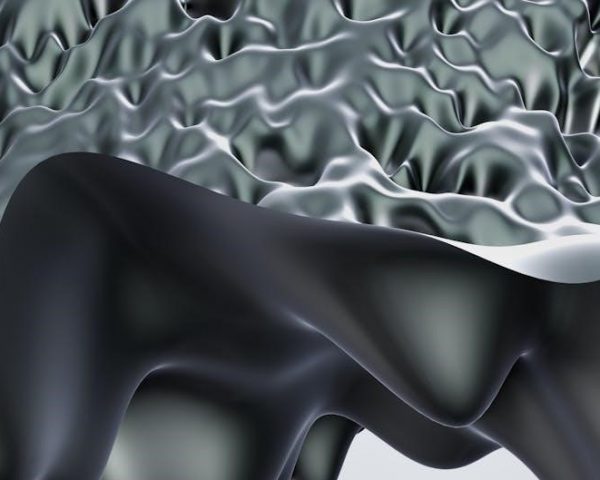The European Union’s history began in the aftermath of World War II, aiming to ensure peace and prosperity through economic and political integration. The EU evolved from the 1951 European Coal and Steel Community, officially becoming the EU with the 1993 Maastricht Treaty. It has since expanded, fostering unity and addressing global challenges.
1.1. Origins and Purpose
The European Union’s origins trace back to post-WWII Europe, where devastation spurred a need for peace and economic stability. The idea of unity emerged to prevent future conflicts through shared interests. The purpose was to integrate economies, starting with the European Coal and Steel Community, fostering solidarity and prosperity. This vision laid the groundwork for the EU’s foundation, aiming to unite nations under common goals and values.
1.2. Key Milestones in EU Development
The EU’s development is marked by pivotal milestones, including the 1950 Schuman Declaration, which proposed unity through resource sharing. The 1957 Treaty of Rome established the European Economic Community, while the 1993 Maastricht Treaty officially created the EU. The Euro’s introduction in 2002 further deepened economic integration. These milestones reflect the EU’s evolution from economic cooperation to a unified political and economic entity.
Post-WWII Context: The Birth of European Integration
The devastation of World War II led to a vision of a unified Europe to ensure peace and stability. The 1949 Council of Europe marked the beginning of European integration, aiming to protect human rights and the rule of law.
2.1. The Devastation of World War II in Europe
World War II left Europe in ruins, with cities, roads, and industries destroyed. The economy collapsed, and millions were killed, injured, or displaced. Over 55 million people lost their lives globally, including six million Jews in the Holocaust. The war’s aftermath created a humanitarian crisis, with 190 million people fleeing their homes. This devastation spurred a desire for peace and unity, laying the groundwork for European integration;
2.2. The Idea of a Unified Europe
Following World War II, the idea of a unified Europe emerged as a response to the devastating conflict. Visionary leaders like Robert Schuman and Jean Monnet proposed collaboration to prevent future wars. The 1950 Schuman Declaration advocated for unity through economic cooperation, emphasizing solidarity and gradual integration. This vision laid the foundation for a peaceful and interconnected Europe, inspiring the creation of the European Coal and Steel Community.
Founding Treaties and Institutions
The EU’s foundational treaties include the 1950 Schuman Declaration, the 1951 Treaty of Paris creating the European Coal and Steel Community, and the 1957 Treaty of Rome establishing the European Economic Community.
3.1. The Schuman Declaration (1950)
The Schuman Declaration, proposed by Robert Schuman on May 9, 1950, sought to unify war-torn Europe by creating a common market for coal and steel. This initiative laid the groundwork for the 1951 European Coal and Steel Community, marking the beginning of European integration and paving the way for the eventual establishment of the European Union, fostering peace and economic unity across the continent.
3.2. The Treaty of Rome (1957)
The Treaty of Rome, signed on March 25, 1957, established the European Economic Community (EEC) and the European Atomic Energy Community (EURATOM). It aimed to promote economic integration among six founding members: Belgium, France, Germany, Italy, Luxembourg, and the Netherlands. The treaty created a common market, fostering economic cooperation and laying the foundation for a unified Europe, ultimately contributing to the EU’s development and the creation of a single market.
3.3. The European Coal and Steel Community (1951)
The European Coal and Steel Community (ECSC) was established in 1951 by six countries: Belgium, France, Germany, Italy, Luxembourg, and the Netherlands. It aimed to manage coal and steel resources jointly, reducing the risk of conflict and fostering economic cooperation. The ECSC was the first supranational institution, laying the groundwork for the EU by demonstrating the success of shared governance and economic integration in Europe.
Expansion and Enlargement
The EU expanded from six members to 27, with key enlargements in 1973 and post-2004. Central and Eastern Europe’s inclusion strengthened unity and diversity.
4.1. The First Enlargement (1973)
The European Union’s first enlargement occurred in 1973, welcoming Denmark, Ireland, and the United Kingdom. This marked a significant expansion beyond the founding six members, strengthening economic and political ties. The accession not only increased the EU’s geographic scope but also diversified its membership, laying the groundwork for future enlargements and deepening the commitment to a unified Europe.
4.2. Expansion into Central and Eastern Europe
The EU’s expansion into Central and Eastern Europe marked a historic shift, beginning in the early 21st century. Countries like Poland, Hungary, and the Czech Republic joined in 2004, followed by others. This enlargement aimed to unify Europe post-Cold War, promoting democracy and economic integration. It significantly diversified the EU, fostering stability and prosperity across the continent while addressing challenges of political and economic transition.

The Maastricht Treaty and the Creation of the EU
The Maastricht Treaty (1993) officially established the European Union, creating a single currency, common policies, and EU citizenship, marking a significant step in political integration.
5.1. The Treaty on European Union (1993)
The Treaty on European Union, signed in 1992 and effective in 1993, formally established the EU. It introduced EU citizenship, a single currency, and the principle of subsidiarity, laying the groundwork for deeper political and economic integration among member states while creating a framework for shared foreign and security policies.
The Euro was introduced in 1999 as a shared currency, initially as an accounting currency, with physical coins and banknotes entering circulation in 2002. It replaced national currencies in 12 member states, fostering economic unity and simplifying trade. The Euro symbolized the EU’s commitment to deeper integration, strengthening its global influence and promoting stability among member economies.
Major Challenges and Crises
The EU has faced significant challenges, including economic crises, political disputes, and social tensions, testing its unity and resilience. These crises have shaped its evolution.
6.1. The European Debt Crisis
The European Debt Crisis began around 2009, impacting countries like Greece, Ireland, Portugal, and Spain. It stemmed from excessive debt levels, exacerbated by the global financial crisis. The crisis threatened the eurozone’s stability, prompting EU-led bailouts and austerity measures. This period highlighted vulnerabilities in economic integration and tested the EU’s ability to maintain fiscal cohesion among member states, leading to long-term reforms.
6.2. Brexit and Its Implications
Brexit, the UK’s withdrawal from the EU, occurred on January 31, 2020, following a 2016 referendum. It marked the first exit of an EU member state, ending 47 years of membership. The transition period ended in December 2020, leading to new trade agreements and economic shifts. Brexit reshaped the EU’s political landscape, testing its unity and prompting reflections on European integration and sovereignty.
The EU Today: Principles and Values
The EU upholds principles of peace, unity, and prosperity, promoting democracy, human rights, and the rule of law. It fosters economic and political integration among member states.
7.1. Political and Economic Integration
The EU has achieved significant political and economic integration, creating a single market and a common currency, the euro. It promotes free movement of goods, services, and people, while fostering unity and cooperation among member states. The EU’s policies aim to ensure economic stability, social progress, and environmental sustainability, strengthened by shared legal frameworks and democratic decision-making processes.
7.2. Human Rights and the Rule of Law
The EU is deeply committed to upholding human rights and the rule of law, principles enshrined in its founding treaties. These values are central to its legal framework, ensuring justice, equality, and fundamental freedoms for all citizens. The EU’s policies and actions are guided by these principles, fostering a society based on democracy, respect for human dignity, and the protection of individual rights.
Future Perspectives and Reforms
The EU faces ongoing reforms to strengthen unity and address global challenges, focusing on climate change, digital innovation, and multilateral cooperation to ensure long-term stability and prosperity.
8.1. The Lisbon Treaty and Its Impact
The Lisbon Treaty, signed in 2007 and effective from 2009, streamlined EU institutions, enhanced decision-making, and strengthened its global role. It introduced the President of the European Council and the High Representative for Foreign Affairs, improving policy coherence. The treaty also increased parliamentary powers and citizen involvement, such as the European Citizens’ Initiative, fostering greater transparency and democratic participation within the EU framework.
8.2. The EU’s Role in a Changing World
The EU plays a pivotal role in addressing global challenges, advocating for multilateralism, and promoting human rights. It influences international policies on climate change, trade, and security, while fostering economic and social development. The EU’s commitment to sustainability, as seen in initiatives like the European Green Deal, underscores its leadership in shaping a more integrated and resilient global community.
Key Figures in EU History
The European Union’s history is shaped by visionary leaders who championed unity and cooperation. Their contributions laid the foundation for a united Europe, ensuring peace and prosperity.
9.1. Visionary Leaders: Robert Schuman, Jean Monnet
Robert Schuman and Jean Monnet were pivotal in shaping the European Union. Schuman’s 1950 Declaration proposed uniting Europe through coal and steel, while Monnet championed economic integration. Their vision laid the groundwork for the EU, fostering peace and unity after WWII. Their leadership and foresight remain cornerstone to the EU’s foundation and continued development.
The EU’s Global Influence
The EU is a significant geopolitical entity, influencing global policies through its economic and social frameworks. Its expansion and the Euro’s adoption have strengthened its international impact.
10.1. Economic and Social Policies
The EU’s economic policies focus on creating a unified market, fostering free trade, and promoting sustainable growth. Social policies emphasize equality, employment rights, and cohesion, shaping a harmonized European society.
10.2. Security and Foreign Affairs
The EU plays a pivotal role in global security and foreign affairs, fostering peace and stability through diplomacy. Established under the Maastricht Treaty, its foreign policies emphasize human rights and multilateralism, addressing international crises and promoting European values worldwide.
The European Union’s history reflects its commitment to peace, unity, and prosperity. From its post-WWII origins to modern challenges, the EU continues to strive for a united and resilient Europe.
11.1. The Legacy of European Integration
The European Union’s legacy is rooted in its post-WWII establishment, aiming to foster peace and unity. The Maastricht Treaty solidified its commitment to integration, balancing national sovereignty with shared goals. Over decades, the EU has promoted democracy, human rights, and economic stability, creating a single market and a common currency. Its legacy underscores the power of cooperation in shaping a united and prosperous Europe.
11.2. The Path Forward for the EU
The EU faces challenges like economic disparities, security threats, and political unity. Future reforms aim to strengthen institutions and address these issues. The EU must adapt to global changes, focusing on sustainability and innovation. By fostering unity and solidarity, the EU can maintain its role as a global leader, promoting peace, prosperity, and shared values for future generations while navigating evolving international dynamics.


